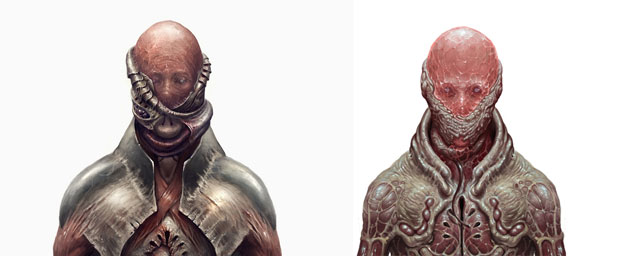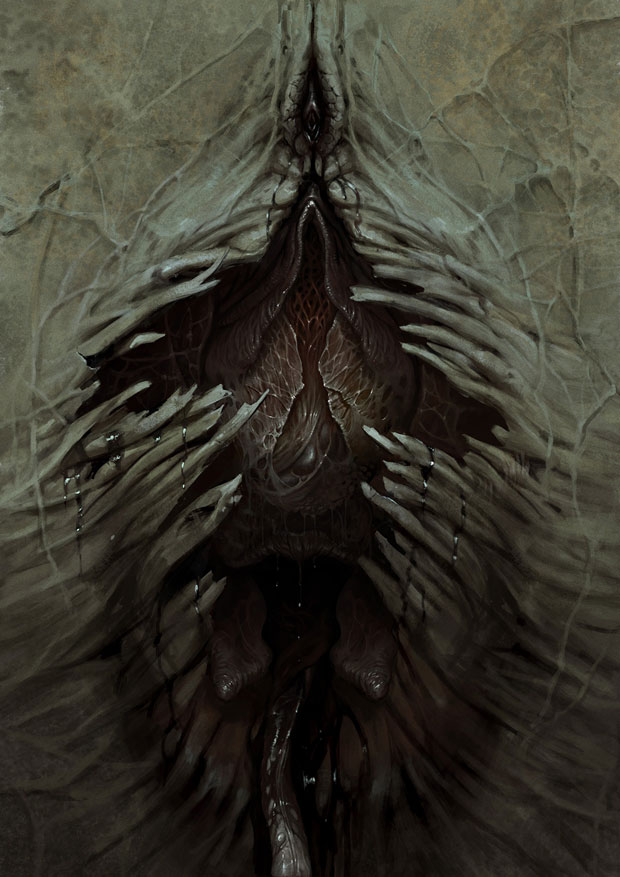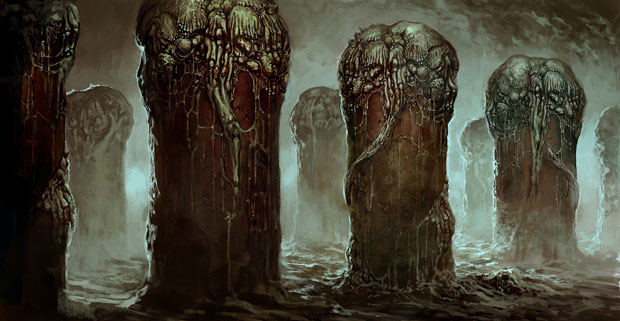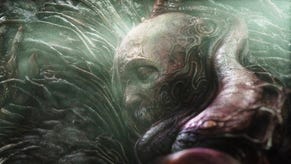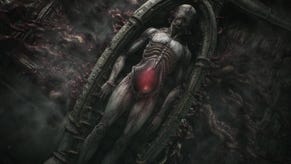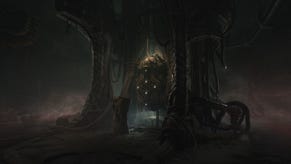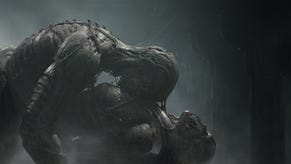State of the Art: The Visceral Style Of Scorn
Architecture meets biology
When the Scorn trailer came out a couple of weeks back I was fascinated by its aesthetic. It has that potent mixture of architecture and biology which skims so close to revulsion but is also incredibly beautiful. It reminded me of conversations about abjection from art history, of ideas about transgressing bodily boundaries, of monstrous organs, dripping fluids...
But I wanted to know what Scorn's developers thought. What led game and level designer Ljubomir Peklar and his colleagues to these spaces for their game? Here are their answers and some of the wonderful artwork they've shared. You can click on each image for a larger version if you want to examine the fine details!
Pip: Tell me about your influences for the game - other artists, places, movies and so on...
Ljubomir Peklar: A person is influenced by many things and different artists throughout his life. Sometimes their art defines your taste and sometimes you naturally gravitate towards concepts you have an affinity for. Your view on life, your thoughts and ideas will push you towards similar minded artists.
Scorn's influences are based on ideas and concepts I wanted to explore. When it comes to visual influences just looking at any comment section for Scorn you will notice two names are constantly mentioned: H.R. Giger (who appears to be a household name now) and the much less well known polish painter Zdzislaw Beksinski. They are certainly the two main visual influences but their work was not chosen because it looks cool but because different aspects of their work relate to various themes and ideas in Scorn. We also tried to create our own style.
As for other influences it's quite a big list. If we are talking movies it's directors like Cronenberg, Argento, Lynch, Carpenter and Jodorowsky just to name a few. Writers of different genres from Horror and SF to philosophy like Lovecraft, Barker, Thomas Ligotti, J.G. Ballard, Stanislaw Lem, Kafka, Albert Camus, Heidegger and so on. Games like Silent Hill, Resident Evil or Metroid Prime.
Pip: How did the look of the game change from initial sketches to the final style?
Peklar: Not that much, surprisingly. The biggest problem was finding the right concept artist that could realize all the details of the world. Our concept designer Filip Acovic, went through my ideas rather quickly but what was crucial is a good communication. Once Filip understood what I wanted we had a flood of interesting concepts. We knew from the start what was visually the right choice for Scorn; we just needed to figure out how to get there. Filip paints quickly so he didn't do many standard sketches. It's really important to get the feel for the world you are creating as soon as possible, especially if it's as unorthodox as this one.
Pip: Which parts did you work on first?
Peklar: We designed the main character first, as he is the centerpiece of the game, so we concentrated on the ideas that we wanted to express through him. There is a feature, that we haven't shown yet, that was really important to get exactly right, both in the concept art and later in the game.
Sometimes you have to try out crazy and even ridiculous ideas to realize what works and what doesn't (image below).
Design change at the later stage (image below).
We also needed to conceptualize some early environments so we could see our main character present in that space.
Pip: Which parts did you have to work hardest on to get them to look right?
Peklar: The hardest part is not creating noise or clutter. If something is oversaturated with detail it becomes noise, or if it has none it becomes flat. It's really strange how much a simple line or form can mutate one concept into another and go stylistically in the wrong direction creating a standard SF or gothic aesthetic. Balance is everything.
Pip: How has the game changed over time? Have you had to accommodate that with the artwork in any particular ways?
Peklar: The biggest problem comes from the fact that not all the ideas on paper work in a fully realized 3D world so you have to change them, balance them out or completely cut them and come up with something new. All that has to be done in a reasonable amount of time. Sometimes the most basic thing can create the biggest problems.
Our workflow is set up on an iterative building block principle. First we do some concepts, then we implement them in the game, see what works and what doesn't, and then redesign the things that were not right. We're still doing it to an extent. It simply wouldn't work any other way. One of the challenges is certainly the number of things that need to be designed. With a concept like this you have to design every possible object inside the world and that takes a lot of time.
The reloading of the gun and some other features had to be changed because it didn't work in the game. Sometimes you come up with better ideas when things don't work as intended.
Old design:
New design:
Pip: I assume you used medical imagery for some of the reference points - can you tell me a bit more about that?
Peklar: Our existence as a living organism is at the core of the game and human anatomy is the primary subject. Therefore we referenced many different parts of it as a starting point, then we morph, combine and exaggerate them, change the shapes until we get something visually appealing. It's not always about functionality but interesting forms that make sense for what we are trying to express.
Human beings are conditioned to like the external beauty of their bodies and see the internal organs, bones and tissue as something repulsive. It's a reflex. It's something most people want to forget. Most of the time you are not aware of your body but when you get ill or old your body turns against you.
Whether you are comfortable with parts of our exterior and interior being a living organism is a crucial part of your existence. We studied human structure but also the building blocks of various creatures on this planet. Nature has created an incredible variety of biological machinery. We have built ourselves a big library of references from many sources, from medical to nature documentaries.
Pip: Which assets or visual effects are you proudest of?
Peklar: Since we still have a way to go our proudest moment is yet to come, but right now we are proud of the monumental structures that you see in the trailer. They convey the sense of big desolate spaces very well. The inhabitants need much more improvement.
Pip: Thank you for your time!









